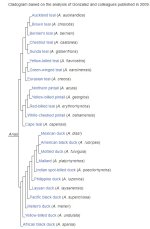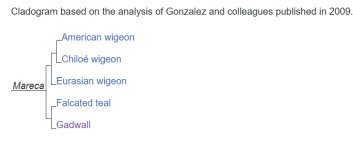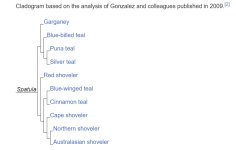If you followed along the Balsa thread on the Carvers Corner, and previous other Forum threads, you know how much fun the confusion between common names vs. scientific names can be.
Even better is the debates between lumpers and splitters in the wildlife biologists community. I tended to be a lumper until advances in genetic studies started providing very clear relationships between species. These advances resulted in the old "lumper" genus Anas being split.
Pointed our what many suspected, that bluewinged teal are actually spoonies.
And gadwalls are actually wigeon.
A lot of other ducks that we thought were just modified mallards, aren't.
And pintails should probably be their own genus, as should true teals.
Here is the new phylogenies:



Even better is the debates between lumpers and splitters in the wildlife biologists community. I tended to be a lumper until advances in genetic studies started providing very clear relationships between species. These advances resulted in the old "lumper" genus Anas being split.
Pointed our what many suspected, that bluewinged teal are actually spoonies.
And gadwalls are actually wigeon.
A lot of other ducks that we thought were just modified mallards, aren't.
And pintails should probably be their own genus, as should true teals.
Here is the new phylogenies:




